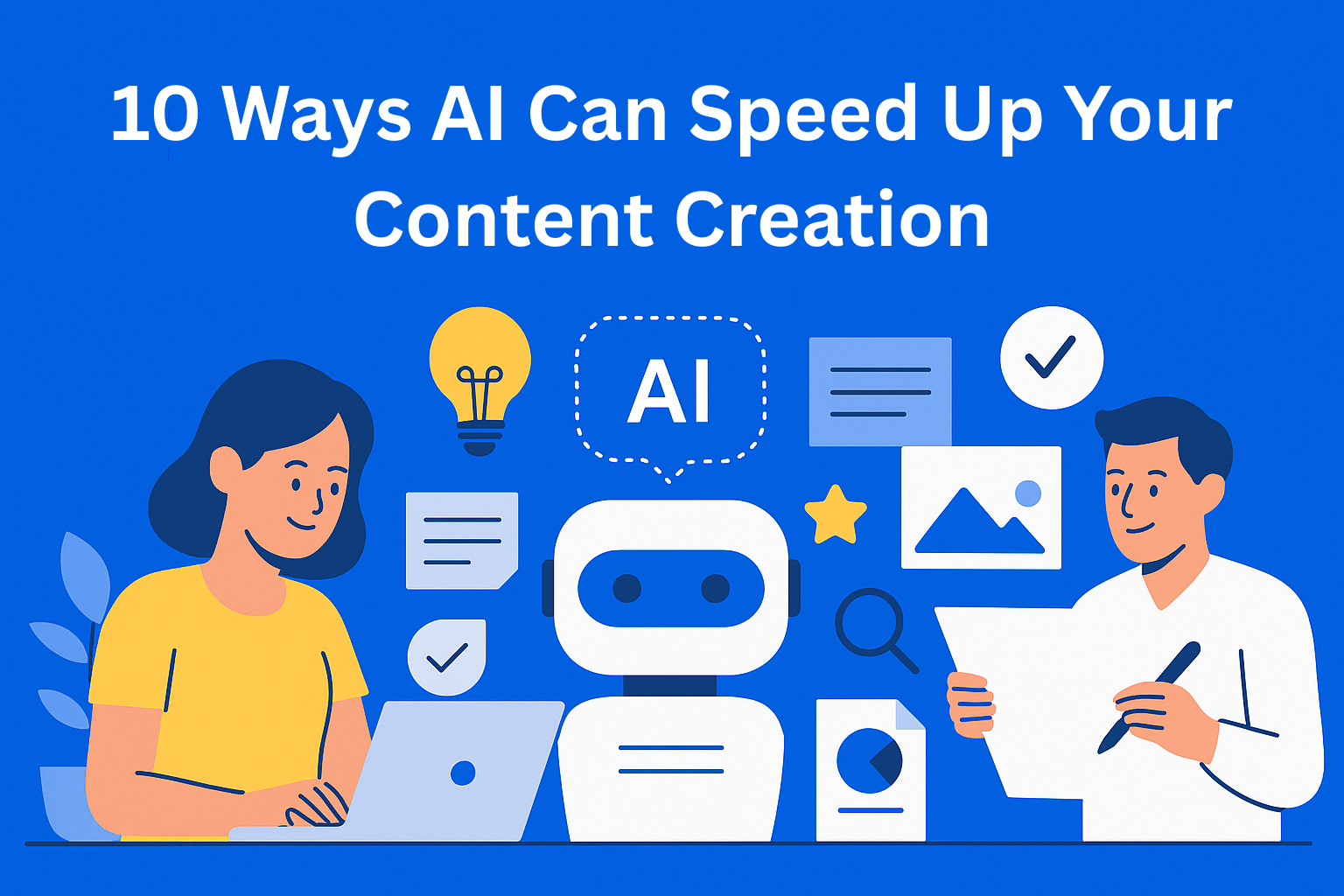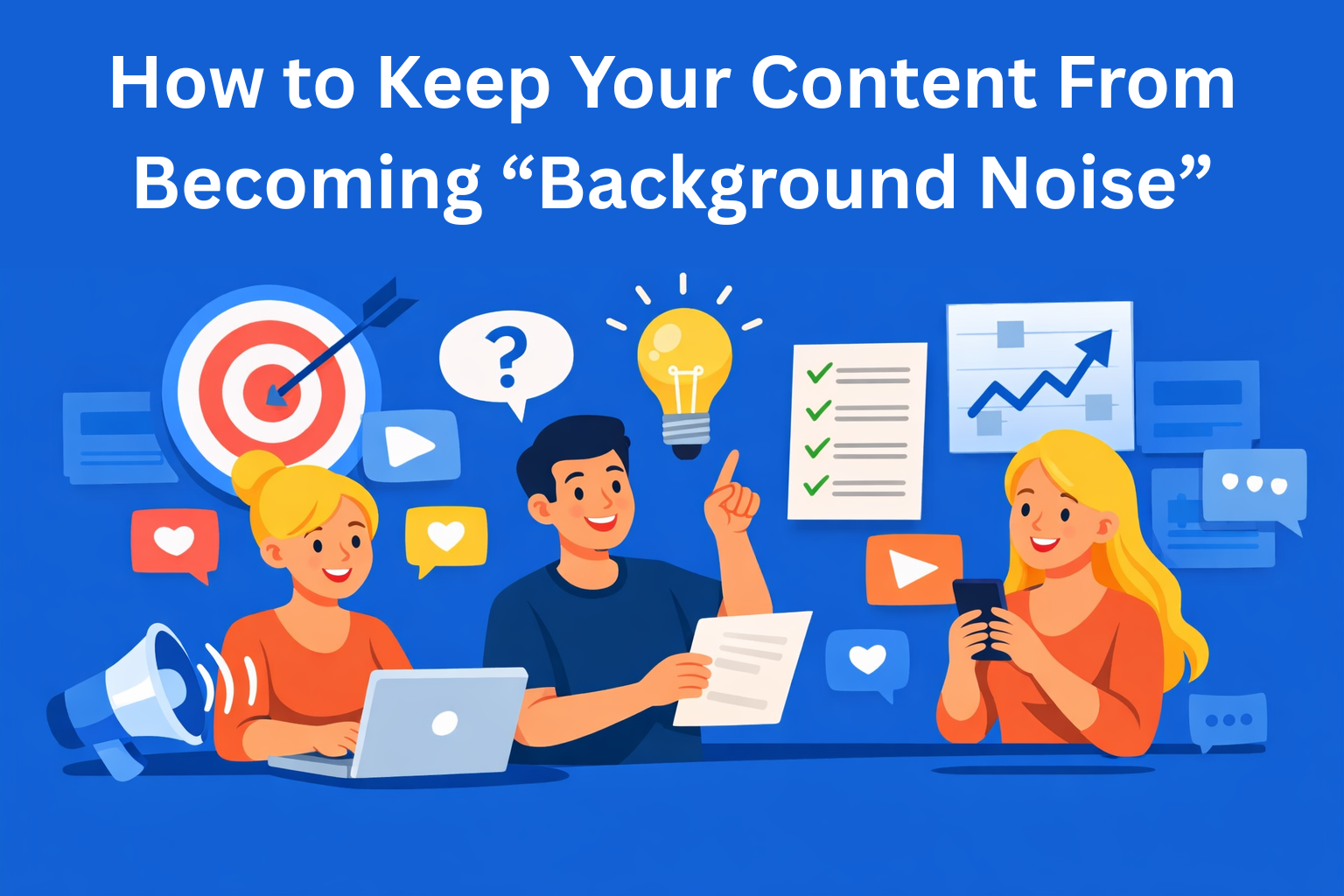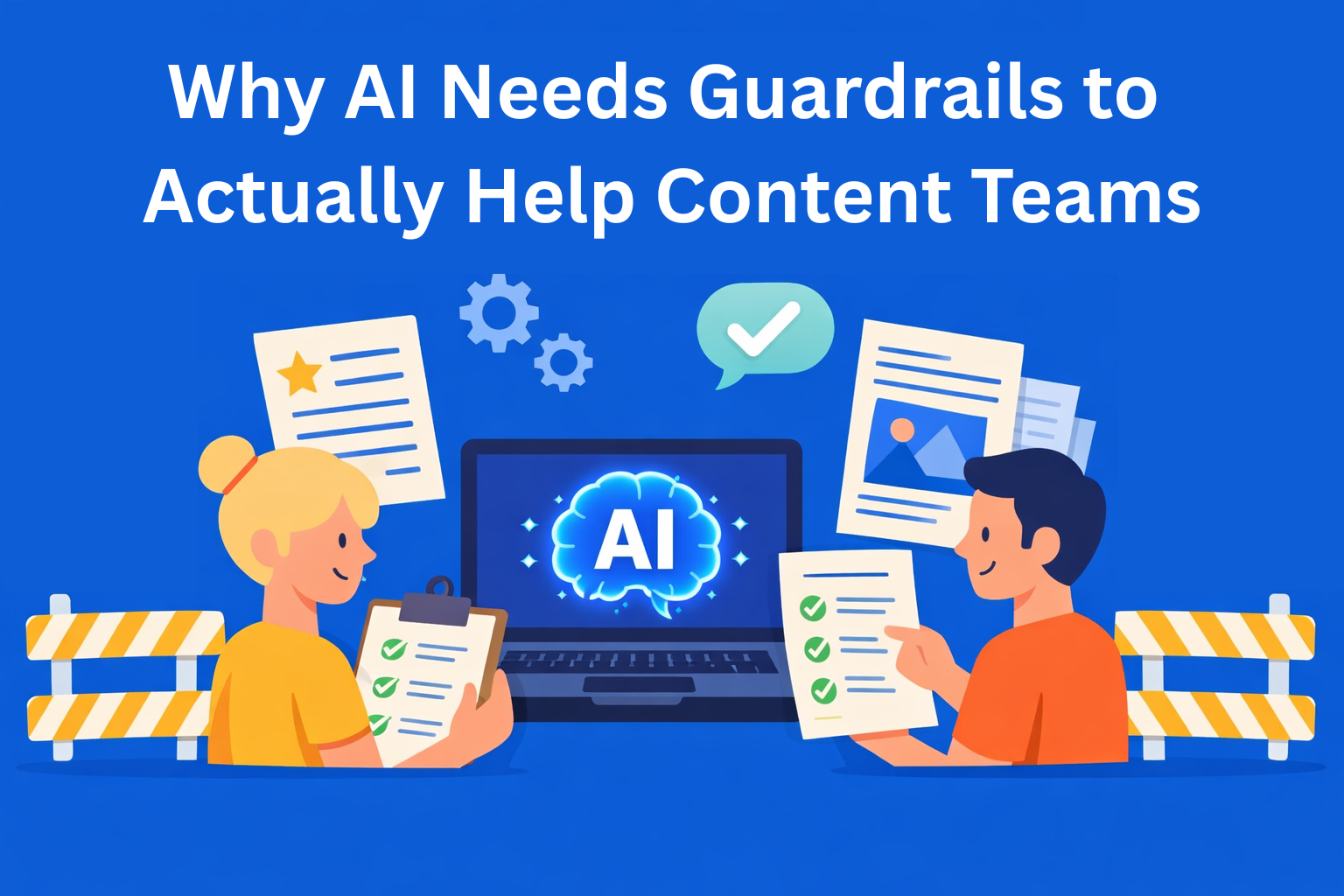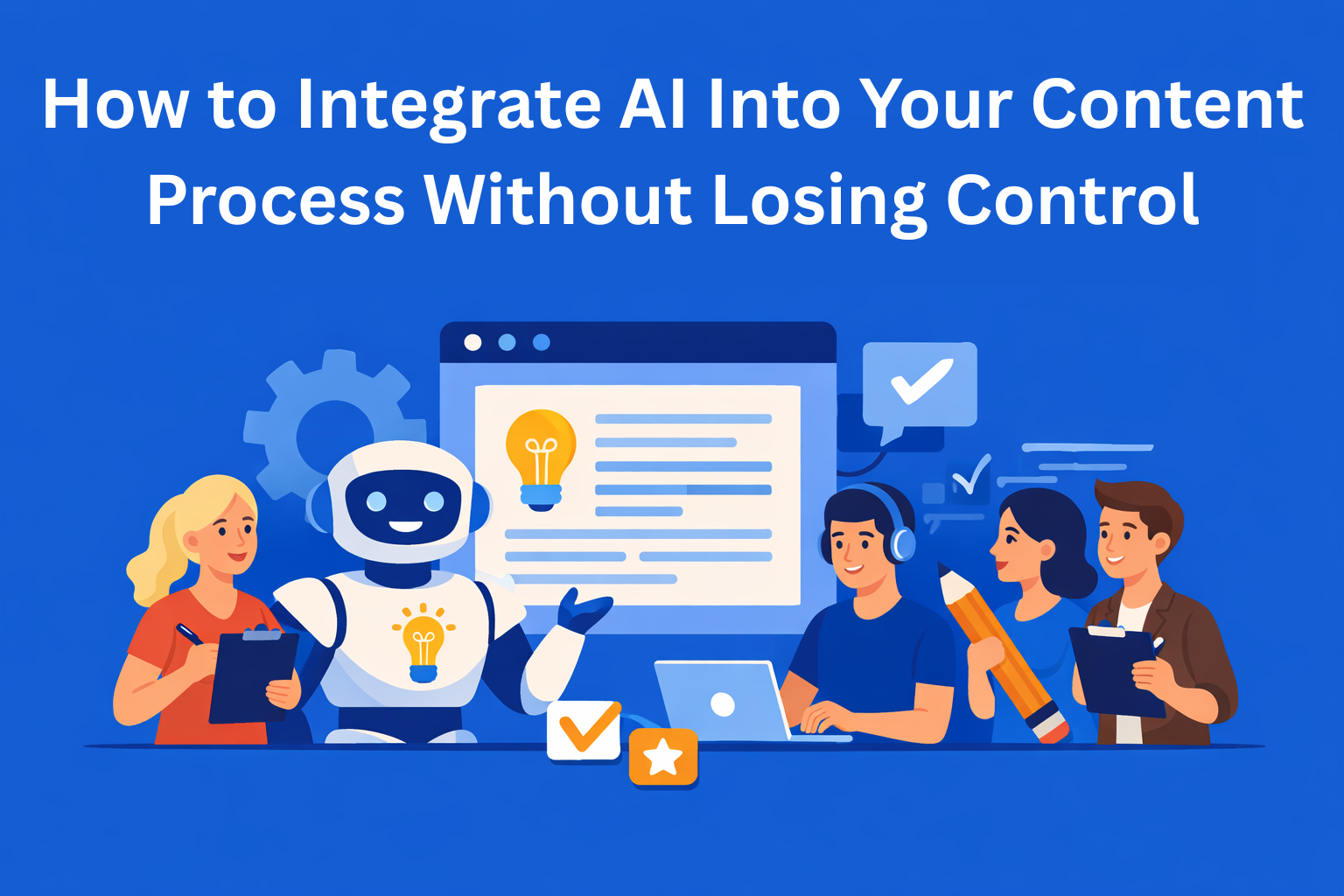10 Ways AI Can Supercharge Your Agency’s Content Creation Process
Discover 10 practical ways AI can speed up your content creation - from ideas and writing to SEO and visuals. If you work at an agency, these tips will make your job easier and improve your results.

Agencies receive new requests, new clients, and even more content to write, design, and publish every single day. Everything needs to be done quickly, with quality, and in line with the brand. AI doesn’t solve everything, but it can definitely make everyday work easier and speed up the entire process - and I’m pretty sure there’s no marketing agency out there not using AI by now.
In this post, we’ll go through 10 ways you and your team can use AI to work faster and more efficiently when creating content.
Key Takeaways
- AI speeds up content creation - from idea generation to drafting, editing, and repurposing, it helps you work faster and stay productive.
- You don’t have to start from scratch - AI can provide outlines, draft intros, or even full posts to help you get going.
- Audience insights become easier - AI can analyze reviews, comments, or Reddit threads to help you understand what readers care about.
- Consistency across platforms - use AI to tailor tone and format across different channels (blogs, TikTok, emails, etc.).
- You still need a human touch - combine AI efficiency with human creativity, empathy, and brand understanding for the best results.
- AI fits into every stage - research, writing, visual generation, proofreading, localization, and testing all can benefit from AI support.
1. Faster Idea Generation
AI tools like ChatGPT, Jasper, and Copy.ai can help you quickly come up with topics and headlines. For example, you type something like "How small businesses can use Instagram for promotion," and you get 20 suggestions - from photo ideas to content types and tracking results.
Tip: Combine AI with your own market knowledge to get the best results. For example, if you ask AI for "best summer destinations" and you know your client is targeting local tourism in Spain, you won’t just take suggestions about Thailand or Bali and rewrite them for Barcelona or Seville - instead, you’ll guide AI to focus on a specific region.
2. Better Understanding of Your Audience
AI can help you understand what your audience wants to read, watch, or comment on. It can search and analyze user comments, product reviews, Reddit threads, and Quora posts. Instead of scrolling through hundreds of comments trying to find a pattern, AI can summarize the most frequently mentioned topics for you.
For example, if you're analyzing comments from users of a language learning app, AI might show that people often mention problems with motivation and lack of time. Based on that, you’ll know to create content that gives practical tips for staying motivated or managing time better - instead of guessing. AI helps you get straight to what people need.
3. Smarter SEO Research
AI-powered SEO tools (like SurferSEO, Frase, NeuronWriter) can generate a list of keywords, content structure, and competitor analysis in just a few minutes.
Example: Instead of manually looking for keywords for something like "Facebook ads for e-commerce," AI can suggest popular search phrases like "best CTA for Facebook ad," "how to set up pixel for online store," or "how to write retargeting ad copy." This way, you get a list of phrases people search for, which helps your content show up more easily in search results and attract more traffic.
Tip: Combine this step with using AI to draft the article. Once the AI tool finds your keywords, you can immediately ask it to generate a rough draft using them. That way, you’re not starting from scratch - you already have a framework to build from.
4. Easy First Drafts
Sometimes the hardest part is just getting started. That’s where AI helps by creating an outline - an intro, subheadings, and a basic structure. You don’t have to start from zero; you get something you can edit, expand with examples, and tailor to your tone.
Example: Ask it: "Can you create an outline for the title ‘5 Hidden Obstacles That Can Derail Your Content Plan’?" and you’ll get a ready-to-use structure that you can later build on.
5. One Piece of Content, Multiple Formats
Once you’ve written a blog post, why not reuse it in five other formats? AI helps you repurpose the same content across platforms - social media, video, email, and more.
Example: A blog post like "The Do’s and Don’ts of Managing Freelance Content Creators" can be turned into:
- An Instagram carousel
- A TikTok script
- A newsletter
- A short YouTube video description
Tip: Use prompts like "Summarize this text in 5 lines for a TikTok voiceover."
6. Fast Proofreading
AI tools check grammar, tone, and clarity - saving you a ton of time, especially when you’re in a rush. If you’re writing under pressure and don’t have time to carefully review every paragraph, AI highlights issues, suggests better wording, and improves flow. This is especially helpful when working with multiple clients and needing to quickly switch tone and style.
Tool to try: Grammarly, Hemingway App, LanguageTool
7. Visuals Without a Designer
AI can also help when you need a visual or illustration for content, but don’t have time or a designer. With tools like DALL·E, Midjourney, or Ideogram, just type a short description - like "coffee mug on a table with an open laptop" - and the tool will generate a professional-looking image. The more detailed your prompt, the better the result.
This comes in handy for blog posts, social media, or when you just need a visual to match your message. You save time and get an original image that fits your topic.
8. Brand-Specific Writing Style
Writing for multiple clients means constantly switching styles - some want formal and professional, others prefer relaxed and friendly. AI can learn how a brand communicates and adapt the text to match that tone. It saves time you’d spend rewriting and makes it easier to keep communication consistent.
Tip: Give AI samples of past content to help it learn the brand style.
9. Translation and Localization
AI doesn’t just translate words - it understands context, which is crucial when targeting audiences in different countries. For example, the same phrase might mean something slightly different in the UK and the US. AI knows how to spot and adjust for that.
It can also rewrite sentences to sound natural in the new language, so it doesn’t read like a clunky "Google Translate" version.
10. Pre-Publish Testing
AI can test multiple versions of your titles, descriptions, and CTAs and predict which one might get more clicks, engagement, or conversions. Based on past performance and user behavior, it figures out which version has better potential.
This helps you make better choices before publishing - so you don’t waste time on content that won’t perform well.
Example: You’ve got two versions of a blog title - ask AI which one sounds more emotional or fits your audience better.
Tip: Combine AI with A/B testing tools (Google Optimize, Optimizely, Convert) to validate your choices.
Conclusion
AI won’t replace your creativity, but it can seriously speed up every step when you're creating content for clients. From initial ideas and writing to editing and publishing - you can finish each stage faster, with solid quality and less stress.
Start with the part of your process that takes up the most time. For example, use AI to draft a blog post for a client, process feedback from their audience, or quickly outline headlines and subheadings. Once that becomes routine, bring in another AI tool - maybe for visual suggestions, SEO structure, or localization. This helps your team collaborate better and deliver quality to clients more efficiently.
If you work with multiple clients and constantly create content for different needs and tones, AI can be a powerful ally. The key is to use it smartly, in a way that fits how you work and aligns with each client's niche. Test different tools, mix them with your experience and strategy - and turn AI into a real advantage for your agency.






